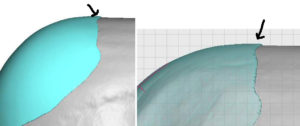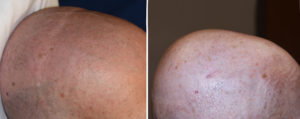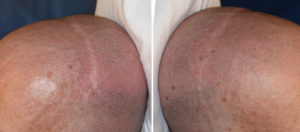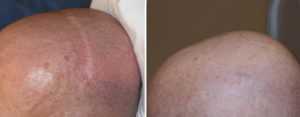Background: Custom made implants are the most effective method for any form of aesthetic skull augmentation. Their shape is preoperatively determined using a computer design process which allows their surface area coverage and projection thicknesses to be created according to visualized bony surfaces/contours and the patient’s aesthetic desires. In this design process the interface of the implant edges and the bony skull surface must be as smooth as possible for a non-visible and non-palpable transition around its perimeter.
While the thickness of the scalp varies amongst different genders and ethnicities, it is generally perceived as being thick enough that small surface contours issues would be obscured and would have no aesthetic significance. Also because the scalp is covered by hair of varying densities in many patients the risk of skull implant edging visibility would be negligible.
But one of the most common types of patients who undergo a wide variety of skull reshaping procedures are men…and many of these men have hairless or nearly hairless scalps due to hair loss or shaving. The sheer exposure of the total skull shape takes on great aesthetic significance and is why they have more skull shaping surgery than women. As a result there is an enhanced importance in male custom skull implants that edge visibility does not result and create its own esthetic liability.

Initially injectable fat grafting was done which helped slightly but was not overly successful due to fat resorption and he sought a more permanent solution.

Whenever any skull implant is going to be on an exposed smooth scalp surface, such as the forehead in men and women or in a shaved male head, a critical design feature is to ensure the smoothest implant edges as possible.
Case Highlights:
1) There is an enhanced need in male custom skull implants to ensure that they have feather edges as part of their design.
2) The treatment for a visible skull implant edge is injectable fat grafting or the placement of ePTFE sheeting over the transition.
3) While the skull implant can be removed and modified or a new one made to replace it, less invasive treatment options are usually patient preferred.
Dr. Barry Eppley
Indianapolis, Indiana





